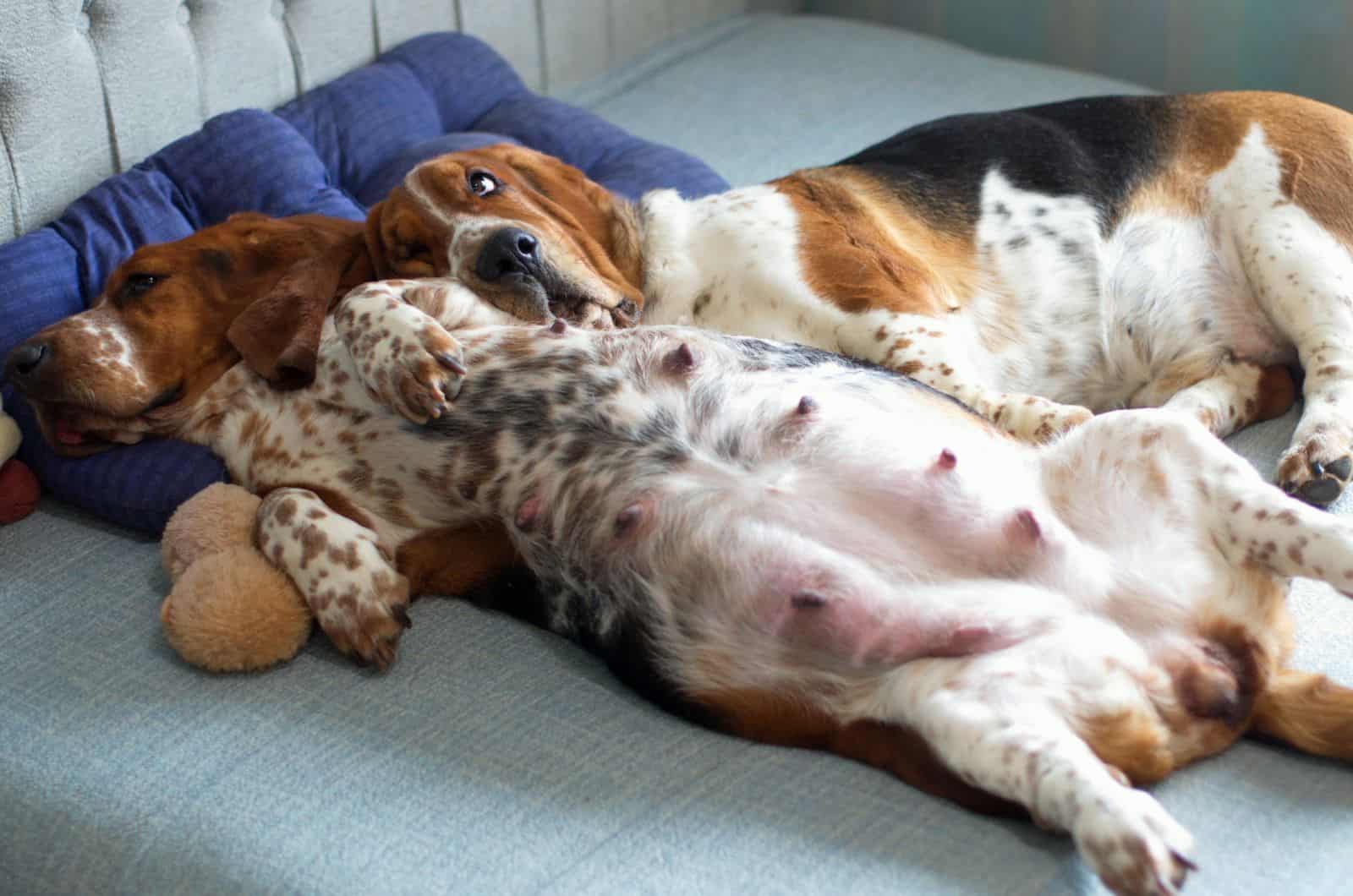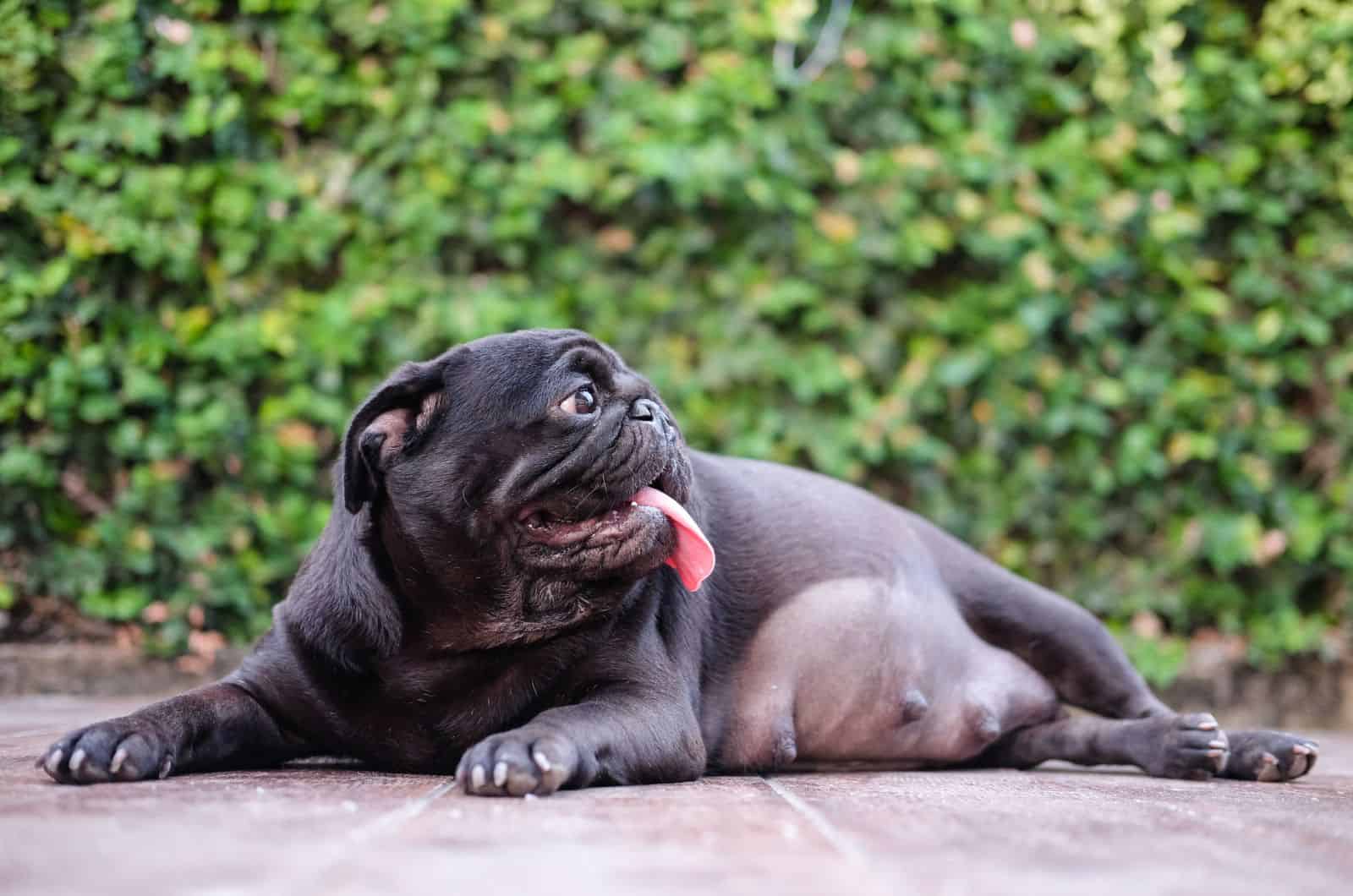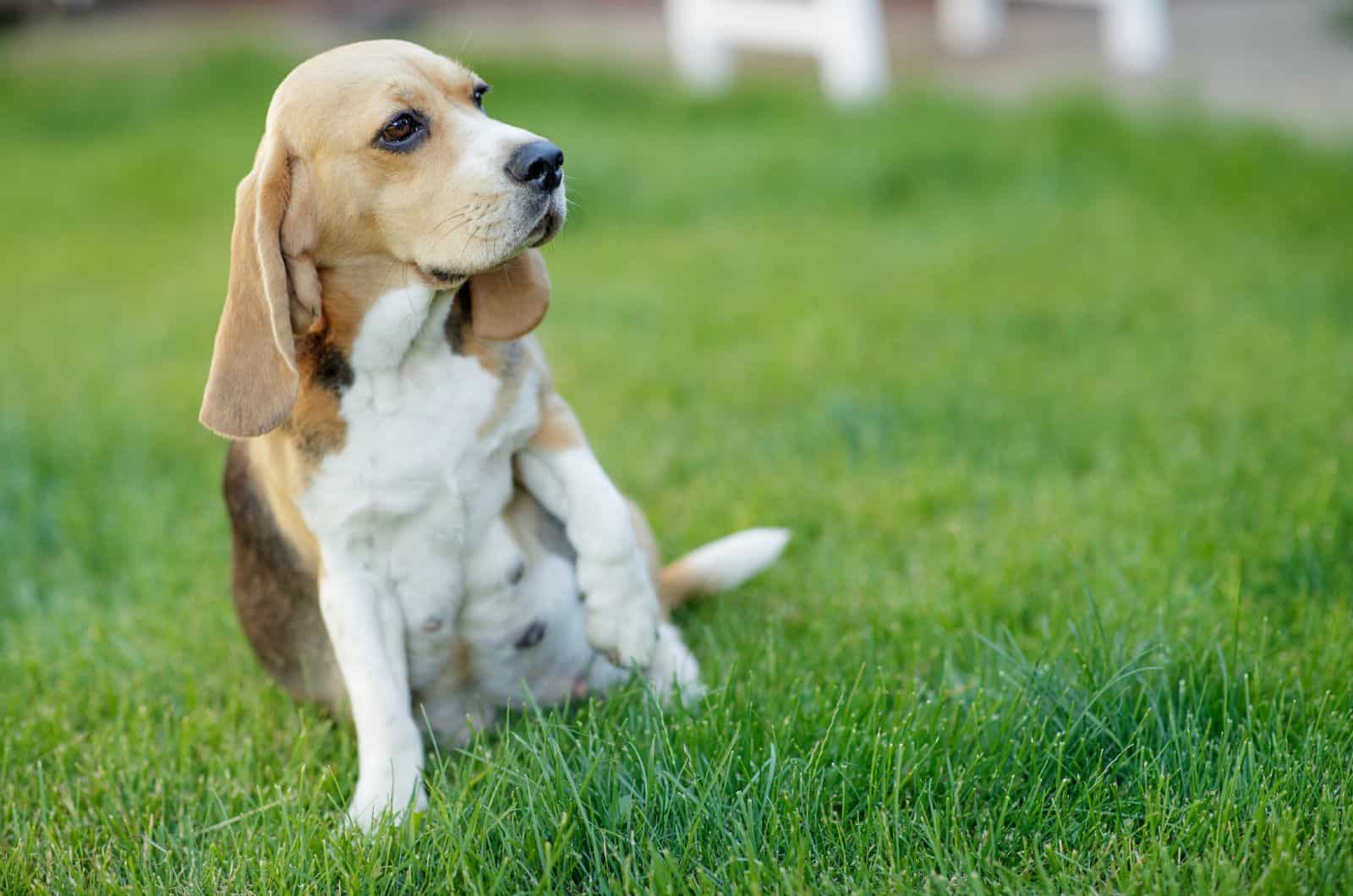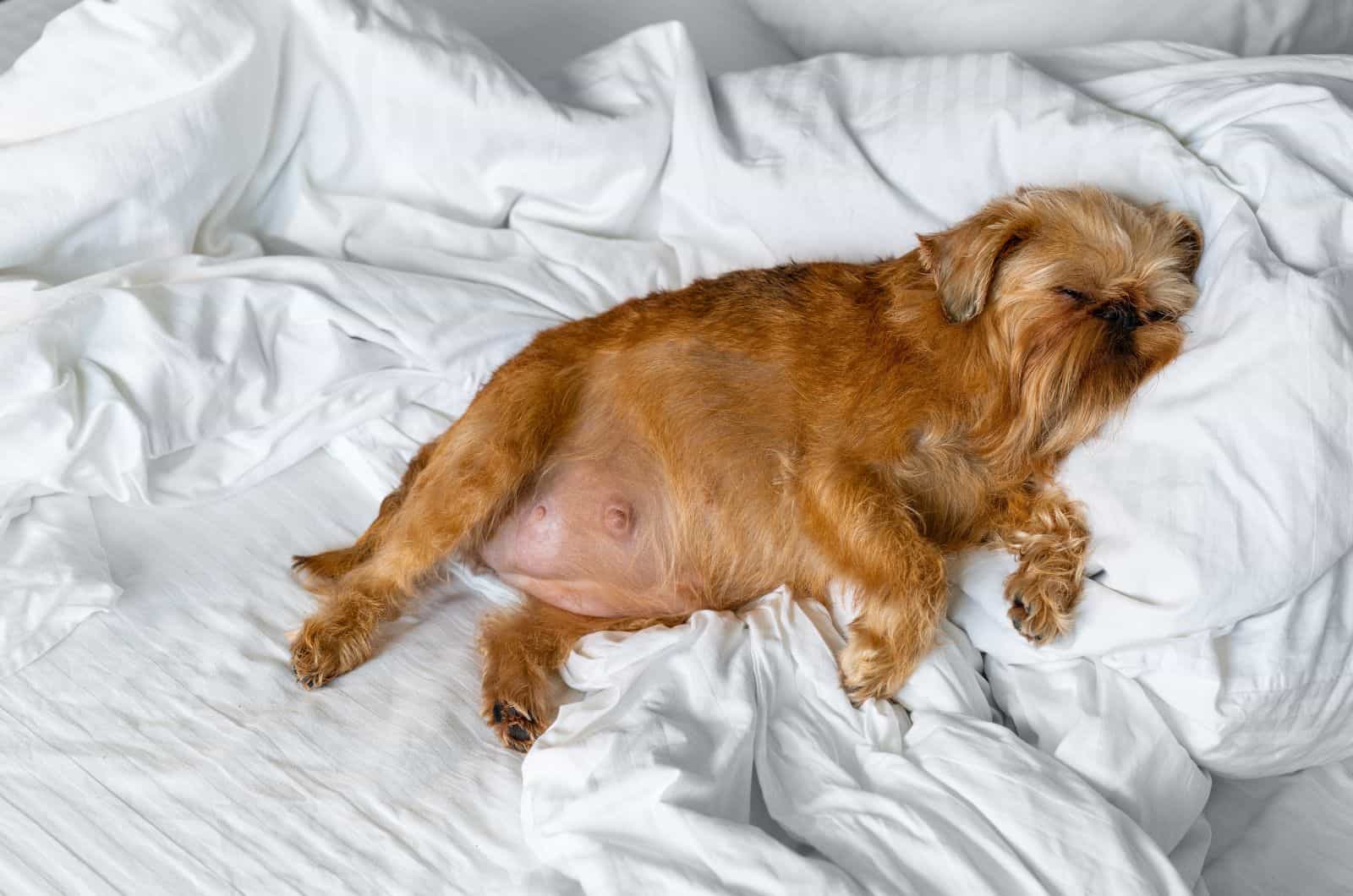A happy moment is approaching in your home: your dear dog is pregnant, and soon you will have several adorable puppies! I believe that you are very excited about this event, and all you want is for the birth to go quickly and without problems.
And… after that – you can enjoy your newborn puppies!
Today, we are here to help you recognize the moment when a dog’s labor starts. Before the labor, it would be a good idea to prepare a certain place in your home that will be private and comfortable enough for the dog to give birth.
Of course, it would also be good to have your own veterinarian who you can contact immediately in case something goes wrong.
However, we dedicate today’s text to teaching you how to recognize the signs a dog is going into labor soon. If your dog is pregnant for the first time, and you are not sure what exactly to expect from this process, we believe that you will learn a lot of useful things after reading today’s article.
Well, let’s start!
What Are The Signs A Dog Is Going Into Labor Soon?

You probably know roughly when to expect your dog to give birth, but it is useful to know how to recognize the signs that announce that labor has begun. What are these signs?
First, we can distinguish between physical and behavioral signs that indicate that a dog is about to give birth.
Let’s start with the physical signs.
8 Physical Signs That Dog Labor Is Coming
You will most likely easily notice some obvious changes in your dog’ body that will tell you that labor is about to happen.
It is good to know what awaits you so that you do not panic if you see that your dog is in a lot of pain since most of the symptoms that you will read are present when the dog goes into labor.
So, let’s learn what the physical signs of labor in dogs are.
1. Mammary Glands Will Become Larger
One of the first things that will give you a sign that birth is close is the enlargement of the mammary glands in the dog.
Also, it is possible for the dog to start producing milk even before giving birth. Milk leakage can start one day before labor, but also several days before.
Usually, dogs that are about to give birth for the first time leak milk a few days longer, while other dogs start leaking milk a day or two before giving birth.
Just like with humans, mother’s milk is extremely important with dogs. By nursing their puppies, dogs form a strong bond with them. Also, mother’s milk is excellent for the growth and development of puppies.
2. The Dog’s Body Temperature Changes
One of the ways you can know that a dog’s birth is approaching is by measuring the dog’s rectal temperature.
The normal temperature in dogs is about 101 degrees Fahrenheit. How does the temperature change when a dog is about to give birth? It drops, and it’s usually about 97 or 98 degrees Fahrenheit when labor starts.
When you record a decrease in the dog’s temperature, it is very likely that labor will begin within a few hours.
Therefore, it is useful to use a rectal thermometer a few days before the due date. It is not a bad idea to even start with the temperature measurement in the final week of a dog’s pregnancy. We can never be one-hundred percent sure which day the labor will start!
This way, when the dog’s rectal temperature drops, you will know for sure that labor has started, and you will be able to help your dog or contact the vet if necessary.
3. The Dog Is Breathing Hard And Shivering
A few hours before giving birth, but maybe even longer, you might notice that your dog is breathing heavily or shivering.
This is a very common symptom in pregnant dogs that will soon give birth.
Simply, the dog is in great pain in those moments, and she tries to overcome it somehow. Here, it is very important that the dog feels your support. It is helpful to pet and encourage her so that she feels safe, and knows that everything will go well.
4. The Dog Shows No Interest in Food
Your dog, which normally loves to eat (especially since she is pregnant!), has started refusing dog food.
A loss of appetite is another sign that the birthing process has started.
In some cases, the dog may also refuse water. However, it is important that the dog still drinks water in order to avoid dehydration during birth. If you are not sure how to act in such a situation, it is a good idea to consult a veterinarian before the due date.
5. The Dog Might Throw Up
Most dogs will show a lack of appetite in the hours or days leading up to their labor. However, some dogs may eat, but then vomit.
As the dog prepares for birth, changes occur in its body. Therefore, vomiting is a sign that the dog did not tolerate the food well. Also, vomiting is a clear sign that your dog could give birth very soon.
In addition, a large bowel movement is something that is noticed in many dogs just a few hours before the whelping.
6. The Dog’s Vulva Is Swallowed
One of the common signs a dog is going into labor soon is a swallowed vulva.
At the beginning of the labor process, the dog’s vulva will be swollen. The dog will probably lick her vulva and her genitals as well in an attempt to decrease her pain.
When the labor begins, you will notice a vaginal discharge coming out of the dog’s vulva. After that, expect to see the first puppy in the next half hour or a little longer!
7. The Dog’s Belly Has Dropped
A short time before birth, you will see that the dog’s belly has become lowered.
This happens because the puppies are getting ready for birth, and they are positioned lower in the birth canal. This is a clear sign that the puppy’s birth is very close.
8. The Dog Is Having Uterine Contractions
Uterine contractions are a clear sign that the dog’s labor has begun.
Although the dog has not started pushing yet, you will notice that she is in pain.
Contractions are often accompanied by panting and howling of the dog. Also, the dog is obviously nervous, and will often get up and lie down again. In some cases, the dog will also bite things that are around.
Contractions are caused by oxytocin, and they push the puppies through the birth canal leading to the dogs’ birth.
4 Behavioral Signs That Dog Labor Is Coming

Besides the changes you can see in your dog’s body, there are also behavioral signs indicating that a dog is going into labor soon.
So, let’s learn them, too.
1. The Dog Is Feeling Anxious
When labor is near, many dogs become anxious.
You can notice the great nervousness present in them, which manifests itself in whining or howling. Some dogs will not respond to your calls. Some will want you away from them, and will require solitude.
These are all signs of a dog’s anxiety that show that your furry friend is very close to giving birth.
2. The Dog Is Showing Nesting Behavior
One of the most common behavioral signs that your dog is nearing labor is nesting. What does that actually mean?
You will notice that your dog is looking for a safe and quiet place to choose for her delivery.
It is good that the place has adequate temperature, and that it is large enough for the dog and all its puppies, especially if you are expecting a larger litter. So, nesting happens when a dog is looking for a safe place to give birth.
3. The Dog Seems Tired
Your dog tolerated the pregnancy well, and was even quite active in the last period, but now you notice that she is sleeping or lying down most of the time.
This is very likely a sign that your dog will give birth in a short period of time. The dog is tired because the pregnancy is nearing its end, and by resting, she is very likely saving the energy she will need during labor. Our dear smart dogs… who wouldn’t love them!
4. A Dog Seeking Solitude Vs. A Clingy Dog?
Your dog is going through a sensitive period, and you are doing your best to be there for her. You listen to her needs, respect them, and react accordingly.
Despite this, your dog isolates herself more and more often, and it seems as if she has started to avoid you.
Don’t worry – your dog still loves you! Seeking solitude is a very common phenomenon when dogs are at the end of pregnancy. They want to see this period through to the end on their own, and they do not show that they need your help.
But, there is another side of the coin. Some dogs will show the exact opposite behavior! It is possible that she will want you to be with her all the time – she will act clingy and will not want to leave your side.
Whichever group of dogs your dog belongs to, it is important that you show consideration for her needs.
What Can I Do To Help My Dog In Labor?

I’m sure you want to do everything in your power to help your dog give birth as quickly and painlessly as possible. If everything is in order, the dog will go through the birth on its own. But, there is always something you can do.
The first thing is to prepare the place where the dog will give birth. This can be any place inside your home that your dog likes or where she feels safe. It is recommended to make a whelping box in which there will be blankets and towels arranged so that the dog is as comfortable as possible.
It is good to prepare the whelping box a few days before the due date so that the dog gets used to its presence, and so that it represents a safe place for her.
Since you are the one who knows your dog best, I believe you will be able to judge what is best for her.
As mentioned earlier, some dogs will want you to be with them during labor while some will prefer solitude. So, it is important to read the signs your dog is sending you and make the birthing process as easy as possible for your dog.
If you are wondering what you will need for your dog’s labor, it is good to have towels prepared, as well as sterile tissues, cotton cloths, and clean, soft cloths with which to wipe the puppies when they are born.
If your dog has difficulties with pushing during the labor, you can help her by gently caressing her belly, and in this way, you will induce the urge.
How Long Should The Dog’s Labor Last?

It is not possible to say exactly how long a dog’s labor will last, but the length of time can go from eight hours to 24 hours.
A dog’s labor can be divided into the three main stages.
In the first stage, signs we mentioned earlier such as nesting behavior, lack of appetite, vomiting, and anxiety in dogs will be noticed. This stage usually lasts between 12 and 24 hours.
In the second stage, the dog starts to deliver the puppies. If everything is in order, the dog usually delivers one puppy every half hour to an hour. Before cleaning and licking each of her puppies, the dog should bite the umbilical cord.
In the final stage, after the fetus (in about 15 minutes), the placenta comes out.
The labor is finished when all of the placentas are delivered.
How Many Puppies Will My Dog Have?
The number of puppies in one litter depends on the dog’s breed.
For example, French Bulldogs have three puppies from one litter on average, and Yorkshire Terriers will have one to three puppies.
Chihuahuas also give birth to an average of three puppies per litter while German Shepherds and Golden Retrievers have a larger litter – their average is eight puppies per litter.
Many breeders want to be sure how many puppies they can expect from their dog. For this reason, they use the X-ray method to confirm the dog’s pregnancy, and to get an estimated number of puppies from an upcoming litter.
When Do You Seek Veterinarian Help?
If it seems to you that all the puppies have been born, but a few hours later, your dog seems to be having contractions, you should seek the help of a veterinarian. In some cases, it will be necessary to perform a C-section.
In the event that the dog has already gone through difficult labor for the first time, if one of the puppies from its litter has died or has some health problems, it is always recommended for the second labor to take place under the supervision of a veterinarian.
Furthermore, after the dog’s labor, you need to pay attention to the general condition of your dog. If a few days after giving birth, the dog has no appetite, seems depressed, or is in pain, or if you notice bleeding in your dog, you should contact the veterinarian immediately.
Taking Care Of Newborn Puppies
Newborn puppies should be kept in a warm, well-ventilated area that is not smoky. In the first few days, puppies are extremely sensitive to temperature. Also, as you can imagine, puppies need a lot of attention.
It is also necessary to ensure that the area where the puppies stay is completely clean.
Therefore, it is necessary to wash your hands every time before touching the puppies, as well as make sure that the puppies do not come into contact with too many people.
When they are so small, they are very prone to diseases, so it is necessary to isolate them (at least in this highly sensitive period) before they receive their first vaccinations.
Another very important thing after the birth of the puppies is to make sure that each of them is drinking their mother’s milk. Puppies that drink their mother’s milk develop a strong immune system.
So, there is a great chance that you will be able to help your dog give birth, and then to take care of the newborn puppies by yourself.
However, we advise you to call your veterinarian to perform the first examination of the puppies, and confirm that the weight of the new puppies, as well as the condition of your dog that has been through labor, is perfectly fine.
FAQs

What Is The Average Gestation Period For A Dog?
A dog’s pregnancy lasts an average of 63 days. However, this is not always the case. The length of a dog’s pregnancy depends on several factors, such as:
• Dog breed
• Dog age
• Number of the dog’s previous pregnancies
So, the gestation period for some dogs can last less than 60 days while other dogs will be pregnant for up to 65 days.
How Can You Tell If A Dog Is Dilated?
The dilation of the cervix during a dog’s labor comes along with strong contractions.
Your dog will be going through a lot of pain, so you will easily notice that the dog is dilated when the first contractions start. In addition to noticing that your dog is in pain, there is a good chance that the dog will also be shaking. If this is happening, your dog is definitely dilated.
How Do Dogs Act When Labor Is Near?
Just before giving birth, dogs are usually a bit restless and anxious.
They will often want to be alone, and will look for their own space without the presence of people.
The dog might refuse food and water, and it is possible that she will also scratch her crate. It is also necessary to mention the nesting phenomenon, which refers to the dog looking for a safe place where she will give birth and take care of her puppies.
What Is The Color Of A Dog’s Discharge Before Labor?
The dog’s discharge before labor should be clear.
If you notice a green color in the dog’s discharge just before labor, you should contact a veterinarian right away! The green color of the dog’s discharge indicates that the amniotic sac has ruptured, and that the puppies, as well as the mother, are in danger.
Summary
Well, hopefully you’ve gained good insight into the physical and behavioral signs a dog is going into labor soon.
In the vast majority of cases, a dog’s labor goes smoothly, but we believe that every dog owner is always a little worried about their pet.
However, with proper dog care and you having all the required information, we believe that everything will go well.
Still, a dog’s labor is a process that should be taken very seriously. It is important that you do everything you can to make your dog as comfortable as possible – and to be there for her.
Also, after giving birth, it is necessary to monitor how the dog recovers and how the puppies progress.
Finally, we hope you found this article useful, and that you will be enjoying your new puppies soon!
Read Next:
• 9 Signs Your Dog Needs To Be Neutered
• How To Tell If Your Dog Is Pregnant? 14 Signs
• How Will My Female Dog’s Behavior Change After Spaying?
